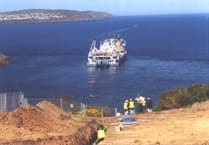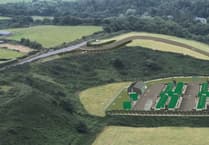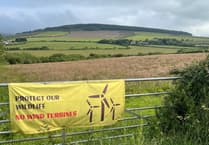Increasing the island’s population to 100,000 will only add to the likelihood that the government will need to reinforce our water capacity in coming years.
This summer saw the island’s third hosepipe ban in five years as water levels in rivers and reservoirs dropped below the annual average.
In a written question to Manx Utilities chairman Rob Callister MHK, David Ashford MHK asked what assessment has been undertaken, or planned, of the resilience of the water infrastructure taking into account the population increase proposed in the draft economic strategy?
Mr Callister said that the current infrastructure developed over the last 20 years was refined by a study carried out in 2002.
This plan assessed the infrastructure requirements that would be necessary ‘for a potential population of up to 90,000 people’.
The Onchan MHK added: ‘In 2002, climate change wasn’t factored into the analysis, but it seems clear that things are changing. Since 2018 we have experienced three dry summers out of five.
‘A detailed assessment of what the effect of 20,000 extra residents would have is yet to be undertaken, but it is apparent that there is some scope for expansion.
‘While three hot summers out of five does not necessarily mean we are seeing the effects of climate change, it has made us aware that it is a very distinct possibility that our water resource capacity might need to be reinforced in the coming years. It is also clear to us that increased population adds to the challenge.’
Among the plans that Manx Utilities is considering, includes measures to reduce our ‘per capita consumption of water’.
While there are few details from Mr Callister about how this would be achieved, Gareth Patchett, Manx Utilities’ head of water, has previously floated (no pun intended) the idea of using water meters to reduce demand, although this was met with negative responses online and would likely be a matter for Tynwald to decide.
Other options put forward by Mr Callister include new water-saving measures for properties, installing new infrastructure to allow the use of reservoirs such as Ballaure and Cringle, which aren’t currently in use, increasing the capacity at Injebreck or even building a new reservoir or desalination plant.
However, he added: ‘All of these solutions involve considerable construction and some would be large and costly projects.
‘Therefore proper planning and investigation will be necessary, but at this stage it seems reasonable to conclude that reducing water demand and repurposing existing infrastructure is considered before major investment in new assets.
‘In all, there are things that can and must be done on both the supply and demand side of the equation.
‘As a nation we must become less wasteful in regard to our use of this precious resource. Manx Utilities have increased their rate of water main replacement, installed pressure reduction systems to reduce bursts and enhanced their leakage detection capabilities.’
Mr Callister said he has also mandated Manx Utilities to bring forward its water resiliency plans in 2023.
The reservoir not mentioned here is Kionslieu, which is near Foxdale.
In response to a written question from Jason Moorhouse MHK, DEFA Minister Clare Barber said her department was still looking at the options for its future usage.
Mrs Barber said that the DEFA is looking at the options identified by a report from Stillwater Associates which includes reinstating the reservoir or axing it.
She added: ‘While the final scheme is being developed, my department continues to monitor the water levels, which includes manual inspections, as well as water level monitors, to ensure that safety is the key priority.’




-and-Barbara-Guy-(right).jpeg?width=209&height=140&crop=209:145,smart&quality=75)
Comments
This article has no comments yet. Be the first to leave a comment.